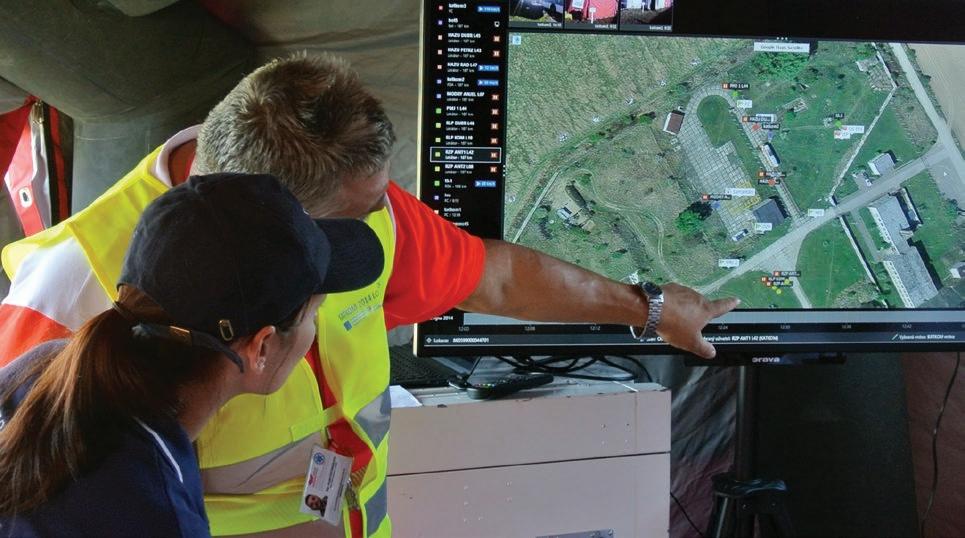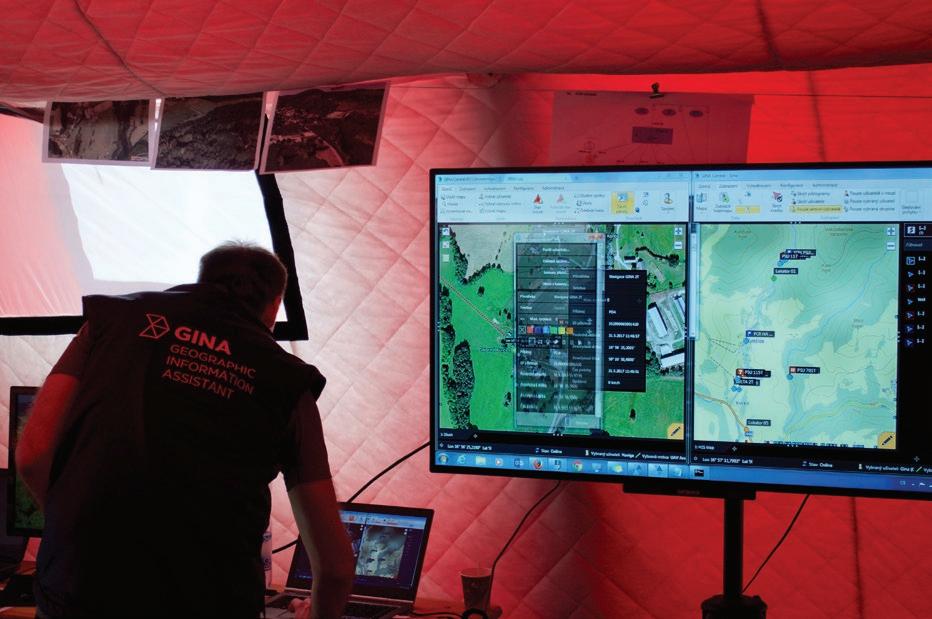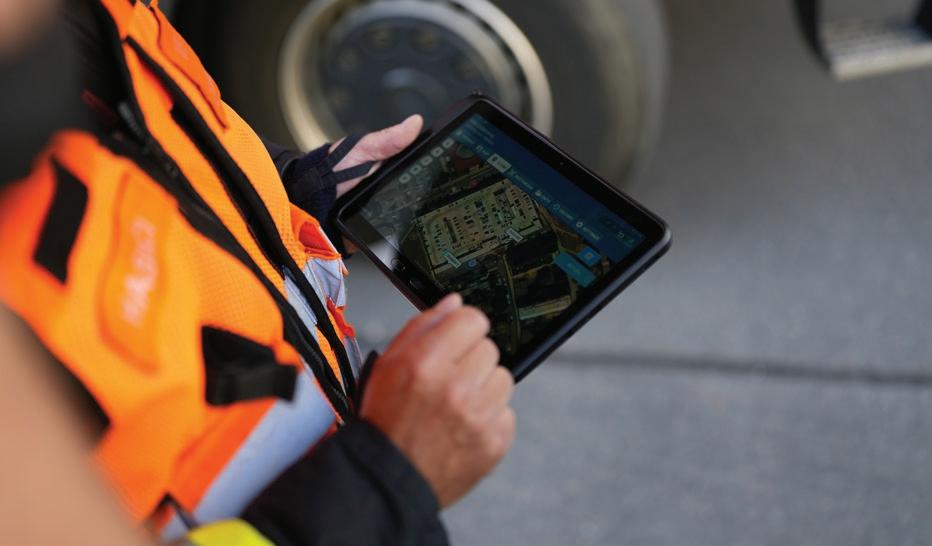
6 minute read
Disaster management: Technology saves the day
Water, fire, wind - all of these can serve and help people, but they can also destroy and kill. We cannot completely protect ourselves from natural elements, so all we can do is to be as prepared as possible, have thought-out scenarios and, when such a disaster strikes, be able to manage the situation quickly and effectively and save as many lives and property as possible. Modern technologies permeate every aspect of our lives and logically have their place in disaster management as well. Let’s look at specific examples of how advanced technologies can make our work easier and safer.
Cyclone Idai, which hit Mozambique, Malawi, Zimbabwe and Madagascar in 2019, is recorded in history as one of the most destructive cyclones of the entire southern hemisphere. It claimed the lives of more than 1 000 people but it is estimated that more than three million people were affected. People suffered not only from the tropical storm itself but also from the subsequent massive floods and the spread of diseases such as cholera. The cyclone also seriously damaged infrastructure, including those for transportation and power. People’s access to services, even crucial ones like health care, was severely constrained.

Based on these experiences, a project was launched in collaboration with the local government under the UNICEF banner to develop an application that would be able to predict the probability and extent of floods in southern Malawi. This system used artificial intelligence to analyse data from weather stations and groundlevel sensors to predict floods and alert communities in advance. Floods remained a huge problem for Africa in 2022. We can look at Nigeria, Mozambique or South Africa, where industries, especially mining and transport, were affected as a result.
However water is not the only threat, disastrous flames frequently ravage African nations. NASA is one of many organizations that map, record, and evaluate their impact. But in the most critical moments, it is always essential to know how to react and get people out of danger from the element. A number of international organizations are helping out in Africa and they are using modern applications from software companies that can tailor proven technologies to their needs.
What can such a solution look like?
Paper maps are a thing of the past In the case of large search operations, rescue operations during floods or evacuations in large fires, nothing is more important for a commander than having a perfect overview of their people in the field. Whether it be fire fighters, rescuers or humanitarian workers. Without effective communication and coordination, confusion arises, tasks are not carried out effectively and important information can be lost in the hectic work pace.

Several organisations are now using modern mapping platforms that act as an electronic shared map. In this, commanders can display the position and movement of their units, their speed, equipment, can directly send them instructions, as well as all available information. These applications allow marking of searched areas or conversely, setting out areas for units to move in.
All participants share photos and videos with each other, even in real time via stream. Records created by workers in the field are projected onto the map, it can be sending the position of a buried well with drinking water, unexploded mines or impassable roads. Digital maps are particularly suitable for activities involving multiple organisations that have to cooperate. Modern systems are so clever that they can link devices of different organisations and technologies. The map displays data from radios, trackers, cameras, tablets or mobile phones.
World-class help from the Czech Republic
Such a sophisticated system is offered by a number of companies, many of which have been proven in disaster management. For example, missions of the United Nations, Mercy Corps or the Red Cross is helped by the Czech company GINA Software. Their technologies are used by rescue services, private security companies and humanitarian organizations not only in Europe but also in the Middle East and Africa. They have been proven, for example, in floods, tornadoes, large forest fires, search missions but also help Czech professional and volunteer fire fighters every day in routine tasks, which are more than 150 000 a year.
Of course, there are many companies on the market with disaster management solutions. Their systems are based on the latest knowledge in the field and incorporate innovative technologies that allow them to offer more and more features while reducing the resulting cost. The importance of a user-friendly and clear environment that allows new users to get started immediately without the need for complex and lengthy training is also increasingly coming to the fore.

You have needs, we have solutions
Each customer can choose from the solutions offered by different companies and get it tailored to their needs. For some, the emergency tablet is suitable, equipped with special navigation that guides vehicles to the scene quickly and accurately, but the tablet also serves as a communication tool with the command centre while they are responding to a call. “We now have these GINA tablets in almost every vehicle. Of course, the volunteer units also have them, so we can see their operations and vice versa. I think it makes the fire fighters’ work much easier even at the scene,” says Jakub Mačát, a Czech professional fire fighter, praising the technology.
On mobiles, humanitarian workers can use the app, which allows efficient data collection and photos from the field and in case of emergency, can call for help with one button, sending the exact location and automated audio message. For spokespersons, the mobile app is ideal, providing a clear but information-rich overview of current and completed operations, supplemented with photos. This is all complemented by the possibility of connecting sensors, vehicle locators, industrial cameras or drones.
The possibilities of using innovative technologies in the field of disaster management are endless and still improving. That is good news for everyone because thanks to it we can save lives. We can save lives through technology.










